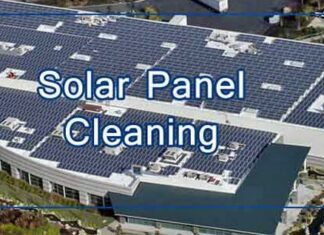Roseville, Calif.- Recently, the Roseville Fire Department responded to a report of a carbon monoxide (CO) detector activation in a private residence in the 600 block of Vernon Oaks Drive.
Upon their arrival firefighters found a family of eight standing in their front yard and a recently installed Carbon Monoxide alarm was activating inside the residence. Utilizing specialized detectors carried on all Roseville Fire engines, firefighters quickly determined that there were dangerous levels of Carbon Monoxide in the home. Because the family had installed the carbon monoxide detector in their home, none of the occupants suffered any symptoms of carbon monoxide poisoning. PG&E was requested to the scene and determined that the cause of the carbon monoxide build-up was an improperly vented fireplace.
Carbon monoxide is a silent killer, a tasteless and colorless toxic gas, that is a byproduct of combustion and will appear naturally in any situation where burning has taken place. Common sources of carbon monoxide include gasoline engines running in closed garages, fuel-burning space heaters or water heaters with improper venting, and blocked chimneys or vent pipes.
Many carbon monoxide incidents are a result of citizens bringing improper heat sources into their homes on cold winter days and nights such as BBQ’s, generators, propane camping heaters, etc.
California Senate Bill 183 requires:
- All existing single-family dwellings that contain a fossil fuel burning heater or appliance, fireplace, or an attached garage must install CO alarms.
- All other existing dwellings -multi-family- shall comply by January 1, 2013.
- CO alarms must be either battery-powered or plug-in with battery backup.
- CO alarms must be installed outside of sleeping areas and on every level (including basement) of a dwelling.
The following precautions against Carbon Monoxide poisoning are recommended:
- Prevent Carbon Monoxide buildup in the first place – make sure heating appliances are in good working order and used only in well-ventilated areas.
- Don’t run a car engine in the garage, even to warm it up; move the car outside first.
- Install a Carbon Monoxide alarm outside every sleeping area, on every level of your home and at least 15 feet away from every fuel-burning appliance.
- Carbon Monoxide alarms are not substitutes for smoke alarms. Know the difference between the sound of smoke alarms and Carbon Monoxide alarms.
- Check the batteries monthly (when you check your smoke alarm batteries) and replace them twice a year.
- Ensure fireplaces are cleaned and properly vented.
If someone who has been in a poorly ventilated room with a fuel-burning appliance begins to feel fatigued, nauseous, drowsy or confused, or complains of a headache, move the victim to fresh air and call 911. If more than one person in the home suddenly feels ill for no apparent reason, or if a Carbon Monoxide detector alarms, get everyone outside immediately and call 911 from a pre-arranged meeting place.
(21+ years strong)
Welcome to the brighter side!
Get in front of local customers! 24/7 (365)





















